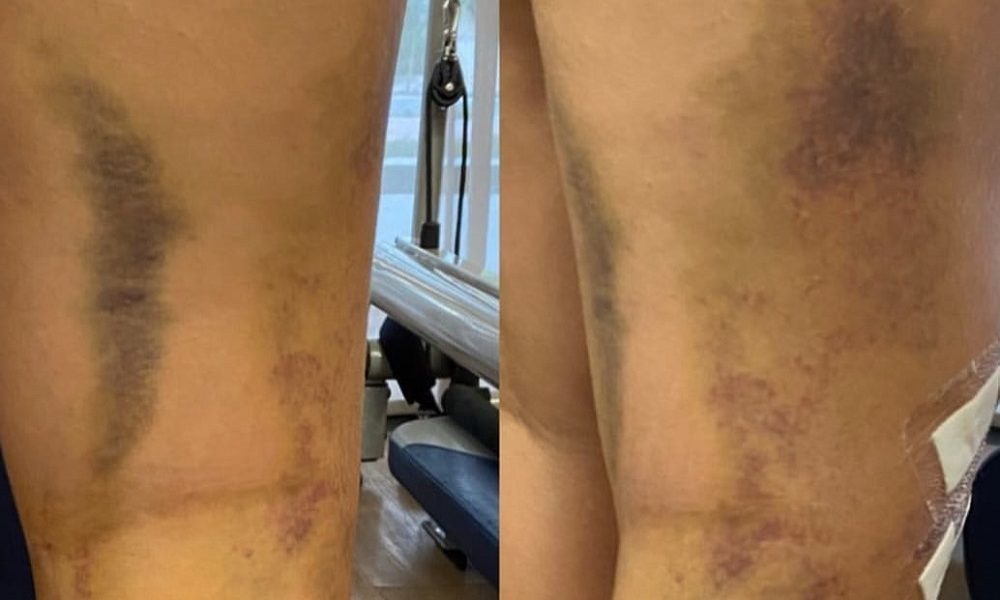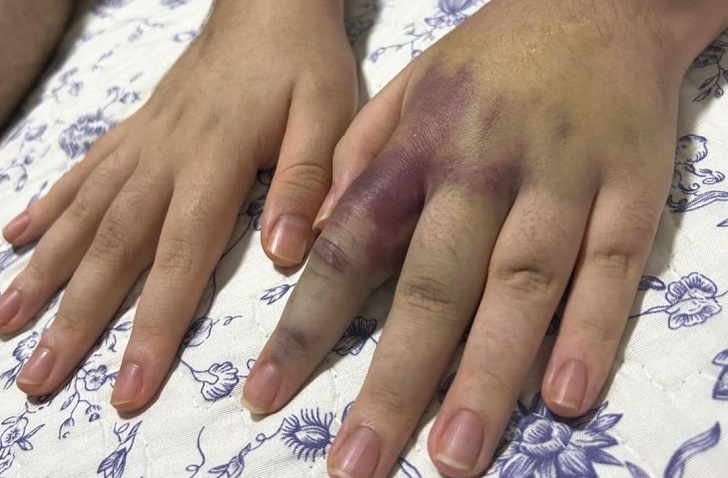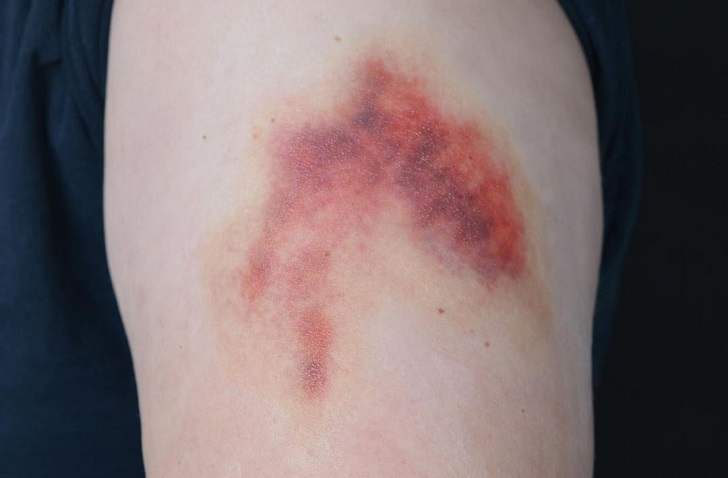
Hematoma vs Bruise: What Is the Difference?

When it comes to injuries, hematoma vs bruise are often used interchangeably, but they refer to different medical conditions. Understanding the distinctions between a hematoma and a bruise can help manage them effectively and recognize when medical attention is needed. This article will explore the key differences between these two types of injuries.
What Is Hematoma?
A hematoma is essentially a collection of blood outside a blood vessel. This condition arises following significant blood leakage, which can be due to various causes such as severe injuries, aneurysms, or complications from surgical procedures. Hematomas can appear in different areas of the body, including the brain (subdural or epidural), liver (hepatic), and even under the skin (subdermal) or nails (subungual).

@convivedocomahemofilia | MSN | Hematoma arises following significant blood leakage, which can be due to various causes such as severe injuries, aneurysms, or complications from surgical procedures.
The symptoms of a hematoma vary depending on its location. For instance, a subdural hematoma, located just beneath the outer protective covering of the brain, can cause severe symptoms like confusion, drowsiness, and even coma, necessitating urgent medical intervention. In contrast, a superficial skin hematoma might present with pain, redness, and swelling, which are typically managed with the RICE method—rest, ice, compression, and elevation.
What Is a Bruise?
On the other hand, a bruise, or contusion, is caused by a minor injury to the tiny capillaries under the skin, leading to a leak of small amounts of blood. This results in a noticeable discoloration on the skin’s surface, ranging from red and blue to purple and black. Bruises are common after minor bumps or falls and usually heal on their own within about two weeks.
People on medications like blood thinners or those with certain medical conditions may bruise more easily. Even a slight bump can lead to significant skin discoloration for these individuals. The recommended treatment for a bruise includes the RICE protocol and possibly over-the-counter pain relief medications to alleviate discomfort.

@health | MSN | Bruise, or contusion, is caused by a minor injury to the tiny capillaries under the skin, leading to a leak of small amounts of blood.
Hematoma vs Bruise: How to Tell the Difference
While both hematomas and bruises result from blood leaking out of injured blood vessels, they do not look the same. Bruises are generally flat and cause skin discoloration without significant elevation or solid texture. They typically resolve without treatment other than comfort measures.

@outofkit | MSN | Bruises are generally flat and cause skin discoloration without significant elevation or solid texture.
In contrast, a hematoma is often a raised area that can feel spongy or firm to the touch due to the larger accumulation of blood. Depending on the severity, some hematomas may require surgical intervention, especially if they continue to grow or exert pressure on surrounding tissues, which is common with hematomas in the skull or other sensitive areas.
Are Hematomas and Blood Clots the Same Thing?
It’s important to note that hematomas and blood clots are distinct conditions. While both involve blood, a hematoma occurs when blood pools outside of a blood vessel, and a blood clot is a mass formed by platelets and fibrin within a vessel to stop bleeding. Blood clots are necessary for healing, but when they occur inappropriately within blood vessels, they can lead to serious health risks like strokes or heart attacks.
Diagnosing and Treating Hematomas and Bruises
Identifying whether an injury has resulted in a bruise or a hematoma is crucial, especially in cases of severe impact or when symptoms do not improve. Imaging studies such as CT scans or MRIs are essential for hematomas, especially those suspected in the skull or deep tissues, to ascertain their extent and to guide treatment, which may include draining the hematoma.
On the other hand, bruises are usually diagnosed based on physical appearance and medical history. They do not typically require extensive investigation unless they are recurrent or appear without a clear cause, which could indicate an underlying clotting disorder.
More in Medical Conditions
-
Advantages of Offering Health and Wellness Benefits to Employees
Employers frequently struggle to provide the benefits that their employees desire, such as health insurance or paid overtime. Changes to federal...
December 21, 2023 -
Can Acupuncture Help Prevent Type 2 Diabetes?
In today’s world, health conditions like cardiovascular diseases, hypertension, and diabetes are becoming more and more common. It is extremely important...
December 4, 2023 -
Did You Know There’s A Tiny Farm In A Berlin Supermarket?
When you go to a grocery store, you head over to the fresh foods aisle where you pick up things like...
December 4, 2023 -
Everything You Need To Know About Glaucoma: Reasons & Treatment
Overview Among our body parts, our eyes are...
November 27, 2023 -
Strategies for Staying Motivated During Your Weight Loss Journey
Embarking on a weight loss journey can be challenging, and staying motivated throughout the process is crucial for success. Whether you’re...
November 11, 2023 -
Managing Stress: Techniques for a Healthier Mind and Body
Stress is an inevitable part of life, but it doesn’t have to control your well-being. By learning how to manage stress...
November 11, 2023 -
Overcoming Challenges: Living with COPD
Chronic Obstructive Pulmonary Disease (COPD) is a chronic respiratory condition that presents its challenges, but for those living with it, every...
November 11, 2023 -
How to Keep Your Baby’s Skin Glowing This Winter?
Dermatologists suggest that newborn babies are sensitive and more prone to skin infections, compared to adults. As you take proper care...
November 10, 2023 -
Check Your Sodium Intake—Not All Salts You Eat Are the Same
Salt is one of the most basic and most important ingredients in cooking. There are a lot of variants of salt...
November 1, 2023















You must be logged in to post a comment Login